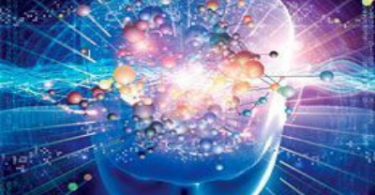Authors: Dr. Ruchi Singh1, Dr. Pradeep Kumar2
- Associate Professor, Dr. MPK Homeopathic Medical College, Hospital & Research Centre, Homeopathy University, Jaipur, Rajasthan
- PG Scholar, Dr. MPK Homeopathic Medical College, Hospital & Research Centre, Homeopathy University, Jaipur, Rajasthan
Abstract: A brief review with indications ofsome lesser known and rare homeopathic medicines for management of Renal calculi is presented.
Introduction: Kidney stone formation or Urolithiasis is a complex process that is a consequence of an imbalance between promoters and inhibitors in the kidneys.1 It is highly prevalent in North India, a part of the stone belt in Asia where two distinct “stone belts” have been identified in the northwestern region (NW).2
The prevalence rates for urinary stones vary from 1% to 20%. Stone incidence depends on geographical, climatic, ethnic, dietary and genetic factors. Determining the risk status of stone formers is important to assess the probability of recurrence or regrowth, and is essential for management of the case. The recurrence risk is basically determined by the disease or disorder causing the stone formation. Stone type and disease severity determine low or high-risk of recurrence.3 A significantly higher urinary urate excretion has been shown among stone formers from Delhi and Rajasthan. Various factors e.g. diet, food habits, water quality , climate may be responsible for the high prevalence.2
Urinary stones can be classified according to size, location, X-ray characteristics, etiology of formation and composition:4
- Stone size: Stone size is usually given in one or two dimensions, and stratified into those measuring up to 5, 5-10, 10-20and > 20 mm in largest diameter.
- Stone location: Stones can be classified according to anatomical position: upper, middle or lower calyx; renal pelvis; upper, middle or distal ureter; and urinary bladder.
- X-ray characteristics: Stones can be classified according to plain X-ray appearance [kidney-ureter-bladder (KUB) radiography] which varies according to mineral composition. Non-contrast-enhanced computer tomography (NCCT) can be used to classify stones according to density, inner structure and composition, which can affect treatment decisions.
| Radiopaque | Poor radiopacity | Radiolucent |
| Calcium oxalate dihydrate | Magnesium ammonium phosphate | Uric acid |
| Calcium oxalate monohydrate | Apatite | Ammonium urate |
| Calcium phosphates | Cystine | Xanthine |
| Drug-stones |
- Aetiology of stone formation
Stones can be classified into those caused by: infection or non-infectious causes (infection and non-infection stones); genetic defects; or adverse drug effects (drug stones).
| Non-infection stones | Calcium oxalate, Calcium phosphate, Uric acid. |
| Infection stones | Magnesium Ammoniumphosphate,Carbonateapatite, Ammonium urate. |
| Genetic causes | Cystine, Xanthine, 2, 8-dihydroxyadenine |
| Drug stones | – |
The most common types of stone found in North India are- Calcium oxalate monohydrate (74.4%), calcium oxalatedihydrate (18.6%).2-3
Clinical Features1-5– Most people are asymptomatic, until the stones begins to move down from kidneys to ureter or gets impacted. The main symptoms of Urolithiasis are severe colicky pain of sudden onset at renal angle which radiates toward groin. ; nausea & vomiting; urinary tract infection symptoms like fever, chills, sweats & pain with urination. RBC’s & pus cells will be found in urine. Sometimes albumin, hyaline casts & crystals may be seen in urine. Other symptoms include haematuria, interruption of urine, pyuria, frequency & urgency.
Ultrasound (US) should be used as the primary diagnostic imaging tool, although pain relief, or any other emergency measures should not be delayed by imaging assessments. US is safe (no risk of radiation), reproducible and inexpensive.1-5
Homeopathic management: Classical homeopathy is the Hahnemannian approach, where the prescribed remedy is selected in order to most closely match the totality of the individual symptoms in a particular patient. Clinical homeopathy comes closer to the fundamental principle of organopathy. In this, homeopathic remedies are selected according to a “disease name”14, that is, according to a clinical diagnosis and the symptom-similarity to the diseased organ. Organopathy is therefore seen as quite close to allopathic, diagnostic treatment.7 Comparative studies on effect of different approaches are being conducted.8
Many homeopathic medicines like Berberis vulgaris, Hydrangea arborescens, Tabacum, Sarsaparilla etc. are well indicated for their peculiar characteristic particular symptoms for renal calculi. These medicines are frequently utilised clinically.
Indications of some lesser known and rare homoeopathic medicines for Renal Calculi are listed below for their potential use on basis of symptom similarity6-7:
- Ammonium Phosphoricum : Rose colored sediment in urine.7 This salt has been used in cases of chronic gout with nodes of urate of soda on the joints.8
- Ammonium formaldehyde : Cystogen –prevents decomposition of urine in the bladder, kidneys and ureters .turbid urine rendered clear and non irrigating ;phosphatic deposits dissolved and growth of pyogenic bacteria arrested .five to seven grains ,two to four times daily ,dissolved in hot water , after meals.
- Arundo mauritanica : Burning urine. Red sediment.7 Much red sand in urine.─After urinating, weight; burning itching in urethra.8
- Asparagus officinalis : Frequent with fine stitches at the orifice, burning. Peculiar odor, Lithiasis.7 Urine straw colour, scanty, soon becomes turbid, with little white specks; afterwards (about four hours), a white flaky sediment; the urine deposits a fatty sediment on the sides of the vessel; urine brown, without sediment; clear, and of a fetid smell; a peculiar smell from the urine. Urgent inclination to urinate; frequent and scanty emission of urine, preceded by a sensation as if a foreign body were introducing itself into the urethra, and followed by a burning sensation; Urine loaded with phosphates and the urate of ammonia (in renal dropsy).─Gravel passes in small quantities with the urine.8
- Balsamum Peruvianum : Scanty urine with a lot of mucoid sediment.7 Sticking and cutting in urethra. Urination more frequent and copious. Urine scanty, with mucous sediment; catarrh of bladder.8
- Berberis aquifolium [Matonia] : Stitching campy pains, thick mucus and bright red, mealy sediment.
- Chenopodium anthelminticum : Copious yellow foamy urine with an acrid sensation in urethra yellowish sediment7 Slight pain in region of kidneys.─Involuntary urination, very copious.8
- Chimaphila umbellata : Urging to micturate urine turbid offensive, containing ropy or bloody mucus and depositing a copious sediment. Burning and scolding during micturition and straining afterwards.7 Constant pain in region of kidneys; urine scanty, dark, fetid, thick, with copious sediment.─Strangury; constant desire to urinate.8
- Calcarea renalis : Lapis realis –arthritic nodosities; lessens tendency to accumulation of tartar or teeth ,gravel and renal calculi.7
- Chininum sulphuricum : Bloody, turbid, slimy, clay colored, greasy sediment. Small amount of urea and phosphoric acid with excess of uric acid and abundance of chlorides accompanied by subnormal temperature.
- Cocus cacti : Brick red sediment. Urinary calculi, hematuria lancinating pains from kidney to the bladder.
- Epigea repens : Mucopus and uric acid deposit, gravel Renal Calculi fine sand in the urine of a brown color.7 It has been successful in removing dysuria and strangury as well as urinary tenesmus.” Hale once gave to a patient who had a bloody muco-purulent sediment in the urine with intense dysuria, ten drops of the tincture six times a day. A copious deposit of fine brown sand was observed and all symptoms were relieved.8
- Elemuy gauteria : Stones in kidney and bladder, grain doses of powdered bark in water or 5 drops of tincture pellagra7
- Fabiana Imbricata: Useful in the uric acid diathesis, cystitis, gonorrhśa, prostatitis, dysuria, vesical catarrh with suppurative prostatic conditions. Vesical tenesmus and burning after urination. Excoriating urine and calculi.7
- Galium aparine : It is used as a diuretic and as a solvent for gravel and stone.8
- Hedeoma: Dragging pain from kidney to bladder. Red sand in urine. Frequent urging, cutting pains. Dull burning pain over left kidney. Pain along left ureter. Frequent intense desire to urinate & inability to retain urine for more than few minutes, better urinating.7
- Ichthyolum : Uric acid deposits burning pain in meatus.7
- Ocimum canum: Formation of spike crystals of urine acid. Brick dust red or yellow sediment. Cramps in Kidneys (Calalus).7
- Parietaria: Renal calculi ;nightmare,patient dreaming of being buried alive. 7
- Pastinaca : Parsnip-loquacity ;delirium tremens,illusions of vision;intolerance of milk ;roots used dietically ,cooked in water or as broth or as salad for consumption and ‘kidney stones’
- Solidago virgaurea : Scanty seddish-brown thick sediment, dysuria, gravel pain in kidney extends forward to the abdomen and bladder.
- Stillingia silvatica: Deposits white sediment urine milky and thick.7 Dull pain in region of kidneys. Incontinence of urine. Violent smarting burning through whole length of urethra < by micturition, with difficulty in voiding urine. Urine: increased; flocculent, mucous sediment.8
- Stigmata maydis: Renal lithiasis nephritic colic, blood and red sand in urine.
Conclusion: Various studies8-10 have demonstrated the beneficial effect of homoeopathic treatment in cases of Urolithiasis, Homoeopathic approach of totality of symptoms has given significant results in this area. However, many lesser known and rare medicines are not indicated in the totality approach due to lack of symptoms of drug. Reproving and clinical verification can generate more symptoms for their homeopathic indications. Case series or reports of treated cases can also furnish more details about these drugs.
References:
- Khan NI, Shinge JS, Naikwade NS. Antilithiatic effect of Helianthusannuuslinn. leaf extract in ethylene glycol and ammonium chloride induced nephrolithiasis. Int J Pharm Pharm Sci 2010; 2:180-4.
- Ganesamoni R., Singh S.K. (2012) Epidemiology of Stone Disease in Northern India. In: Talati J., Tiselius HG., Albala D., YE Z. (eds) Urolithiasis. Springer, London.
- Trinchieri A CG KS, Jun Wu K. Epidemiology. In: Stone Disease. C.P. Segura JW KS, Pak CY, Preminger GM, Tolley D., eds. Health Publications, Paris. 2003. p. 13-30
- Guidelines on Urolithiasis. European Association of Urology.2015 Available from: http://www.guidelines.gov/content.aspx?id=12528
- Longo D L, Fauci A S, Kasper D L, Hauser S L, Jameson J L, Loscalzo J. Harrisons Manual Of Medicine, 18th Edition. mc graw hill; New Delhi: 2013.
- Kent J. Repertory of the homeopathic materia medica and a word index. New Delhi: B. Jain Publishers; 1993.
- Boericke W. Pocket Manual of Homoeopathic Materia Medica and Repertory. 9th Edition. New Delhi: B. Jain Publishers (P) Ltd; 2009.
- Clarke JH. A DICTIONARY OF PRACTICAL MATERIA MEDICA By John Henry CLARKE, M.D. Presented by Mdi [Internet]. T. [cited 2020May2]. Available from: http://www.homeoint.org/clarke/index.htm
- V. A. Siddiqui: A multicentre observational study to ascertain the role of Homoeopathic therapy in urolithiasis, Indian Journal of Research in Homoeopathy.2011;5(2)April-June:p.30.39,. (http://ayushportal.nic.in/ShowDefault.aspx?IDD=13349
- V.A. Siddiqui: To explore the utility of Homoeopathic medicine Lycopodium clavatum in Urinary calculi, Indian Journal of Research in Homoeopathy | 2010 | Vol 4No3,July-September34-43 (http://ayushportal.nic.in/ShowDefault.aspx?IDD=13328)
- VA Siddiqui: A big urinary calculus expelled with Homoeopathic medicine, Indian Journal of Research in Homoeopathy / 2008 Vol. 2, No. 4 October-December / 1 / 4 / 50- (http://ayushportal.nic.in/ShowDefault.aspx?IDD=2265)





